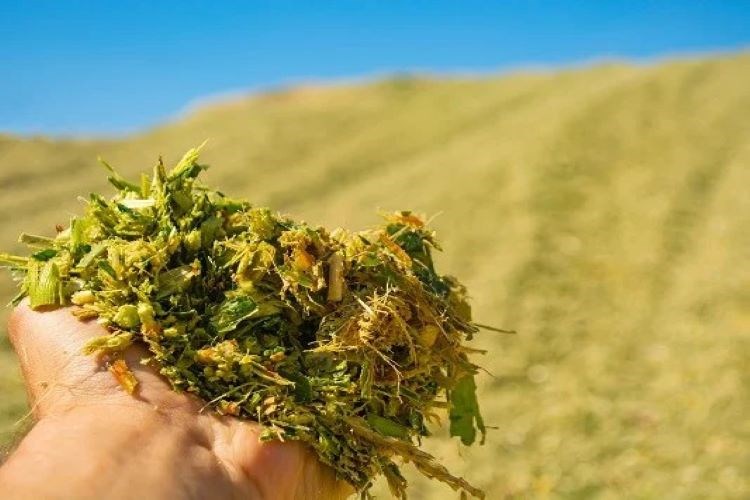
In the case of grass silage for cows:
- For a healthy silage, aim at an optimal yield with a correct level of sugars
- Apply sufficient amounts of fertilizer at least 8 weeks before mowing.
- Avoid surface application of slurry within 10 weeks of mowing to reduce the risk of problems with silage quality due to contamination with undesirable micro-organisms.
- Avoid that the dry matter level of grass silage for cows is too high as a result of excessive wilting.
In the case of corn silage for cows:
- Harvest corn silage for cows before it reaches the dough stage. The risk of problems with the quality of silage due to fermentation increases once corn is cut and matured.
Silage management: improve silage quality by reducing contamination of silages and growth of undesired microorganisms at harvesting
During the silage-making process, several measures can be taken at harvesting:
- When making silage, avoid contamination of silage for cows with soil as much as possible, as this can be a source of anaerobic bacteria which can harm silage quality parameters.
- If the dry matter of a crop is above 30%, fine chopping of silage for cows makes it easier to exclude air once the crop is put into the silage bunk.
When making silage, silage quality can be improved by filling the trenches properly.
Reducing the growth of micro-organisms will improve silage quality because it will increase the stability of silage for cows:
- When making silage, ensure the silage storage space is clean, the surface is smooth, and the silo is not leaking before it is filled
- Avoid problems with silage quality by organising harvesting of silage for cows in such a way that delayed filling of the silos can be avoided.
- When making silage, don’t harvest too much crop in a single session.
- Adapt the tractor weight and harvesting speed to ensure good compaction, the optimal packing density during silage making is around 240 kg/m3
Reduce undesired growth of micro-organisms in silage for cows during storage in the silo
- When making silage, apply plastic lining to the side walls of the silo.
- Ensure the silo is being sealed properly and as quickly as possible during the silage-making process. Use plastic of at least 125 microns, and cover the silage for cows with soil and/or tires to ensure the quality of the silage is preserved during storage.
- Use side sheers when making silage for cows.
- Keep the clamp of the silage for cows airtight, and repair any damage caused by birds or rodents.
- To ensure silage quality parameters don’t deteriorate during storage, use long narrow silos instead of short wide ones, as this will allow a rapid rate of feeding once the silage for cows will be opened. Proper silage management should ensure the silage face of a healthy silage should advance by at least 30 cm/day.
- When making silage for cows, consider the use of inoculants or additives at harvesting. Use a dairy feed additive such as Fyvalet Silage in case of silage for cows with crops that have a high dry matter content and relatively low levels of easily fermentable sugars. When making corn silage for cows, use an additive such as Fyvalet Corn, suitable for crops with a high moisture content and/or high level of easily fermentable sugars. Both additives improve silage quality because they increase the temperature stability of the silage for cows. This maintains silage quality parameters for as long as possible after opening the silage clamp.

